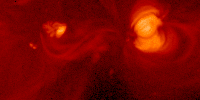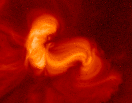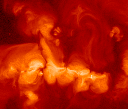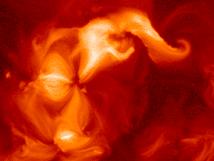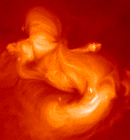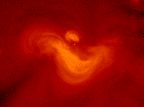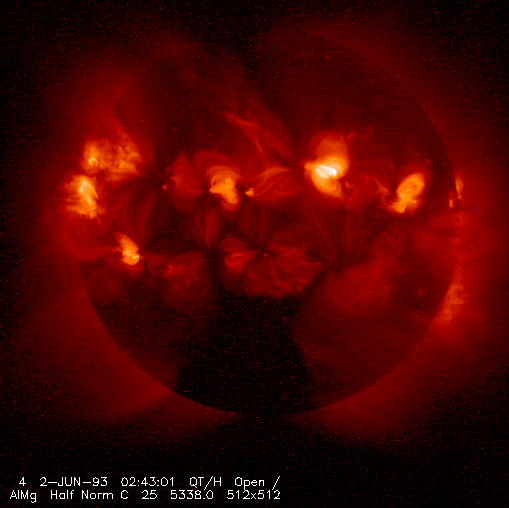What does helicity mean? (see also: Helicity in simple terms (DOI: 10.1007/ s12036-008-0006-1) | Helicity on the Web
Books and Book Chapters
- Pevtsov, A.A., Berger, M.A., Nindos, A., Norton, A.A., van Driel-Gesztelyi, L.: 2014, “Magnetic Helicity, Tilt, and Twist”, Space Science Reviews, 186, issue 1, 285-324, DOI: 10.1007/s11214-014-0082-2
- Magnetic Helicity at the Sun, in Solar Wind and Magnetospheres; Vistas from X-Ray Observatories, Buechner, J. and Pevtsov, A.A. (Eds.), Advances in Space Research, Volume 32, Issue 10, 2003, (Pergamon).
- Magnetic Helicity in Space and Laboratory Plasmas, M. R. Brown, R. C. Canfield, A. A. Pevtsov (Eds.), 1999, (AGU).
Helicity Meetings
Future
Past
- The NORDITA program on “Solar helicities in theory and observations: implications for space weather and dynamo theory“, Stockholm, Sweden, 4-29 March 2019
- Helicity Thinkshop 3, Tokyo, Japan, 19-23 November 2017
- Chapman Conference on Magnetic Helicity in Space and Laboratory Plasmas. Boulder, CO, USA, 1998, see book.
- 34th COSPAR SCIENTIFIC ASSEMBLY, Scientific Commission D, “Magnetic Helicity at Sun, in the Solar Wind and Magnetospheres”, Houston, TX, USA, 2002, see special issue
- XXVth IAU General Assembly, JD03: Magnetic Fields and Helicity in the Sun and Heliosphere, Sydney, Australia, 2003
Art and Helicity

Helicity in Solar Corona
Coronal observations from the Soft X-ray Telescope aboard the Yohkoh spacecraft provide a number of examples of sheared coronal structures in the shape of a forward or backward S. From our point of view these structures indicate electric currents flowing in the corona, whose direction determines the sense of the shear. A force-free field model gives a good example of that.

Here is a model linear force-free field with alpha > 0 (left) and alpha < 0 (right). Electric currents are parallel to the magnetic field vector for the positive alpha and antiparallel for the negative alpha.
SINUOUS LOOPS AND PHOTOSPHERIC MAGNETIC FIELDS (by Alexei A. Pevtsov, Richard C. Canfield and Thomas R. Metcalf)
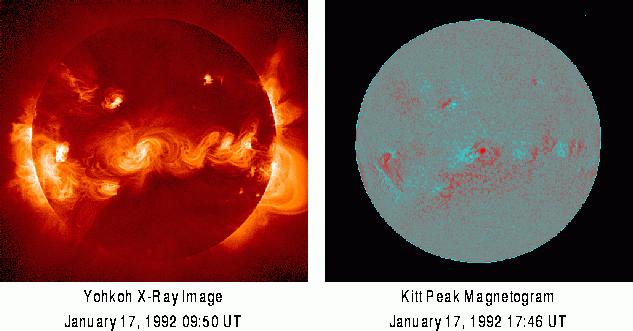 These two datasets show coronal and photospheric magnetic fields. The distinctive feature of this Yohkoh SXT image is the sinuous shape of the coronal field lines; such structures appear in only a small fraction of active regions.
These two datasets show coronal and photospheric magnetic fields. The distinctive feature of this Yohkoh SXT image is the sinuous shape of the coronal field lines; such structures appear in only a small fraction of active regions.
The Kitt Peak magnetogram shows the line-of-sight component of the magnetic flux in the Sun’s photosphere (red indicates positive polarity). The time delay between the magnetogram and the X-ray image is sufficiently short that they can simply be overlaid to establish the relationship between of various features; neither magnetic evolution nor solar rotation is a significant factor, on this scale. Each active-region system of coronal loops can be identified with a red-blue pair of photospheric magnetic fields. It is clear that the bright loops connect fields of opposite polarity within individual active regions, not between them.
The sinuous S-shapes of these loops are a manifestation of the helical structure of their coronal magnetic fields. This helicial structure, in turn, indicates the presence of strong electric currents in the flux ropes (buoying up from the solar interior) that make up these regions. The projected shape of these X-ray loops is a useful clue about the direction of the currents. Forward-S shapes indicate positive helicity, i.e. currents parallel to the magnetic field; backwards-S shapes indicate antiparallel currents. Using Yohkoh images and Hawaii vector magnetograms, SXT researchers have recently discovered a strong statistical relationship between S shapes of coronal loops and current directions in the photosphere, lending further support to their recent discovery that these loops carry current that is generated beneath the visible surface, probably at the base of the convection zone.
Sigmoids in the Yohkoh soft X-ray observations.
